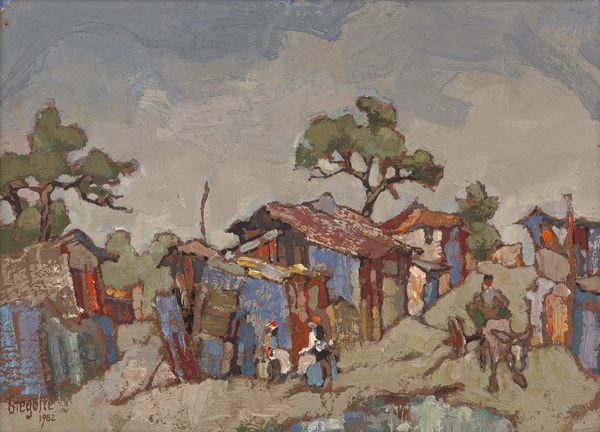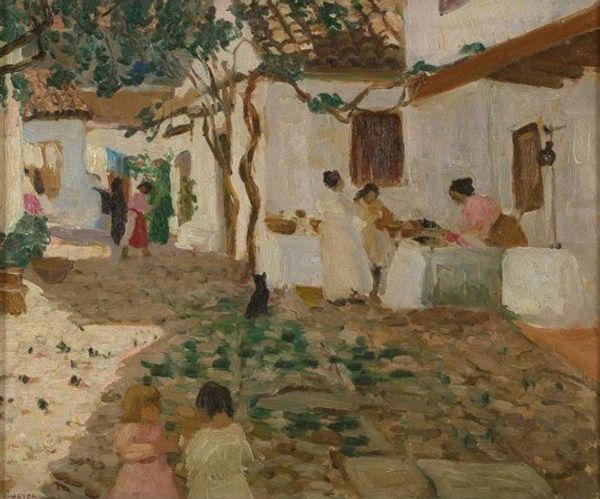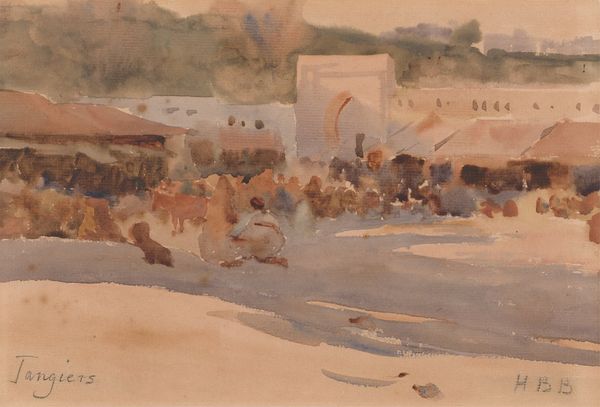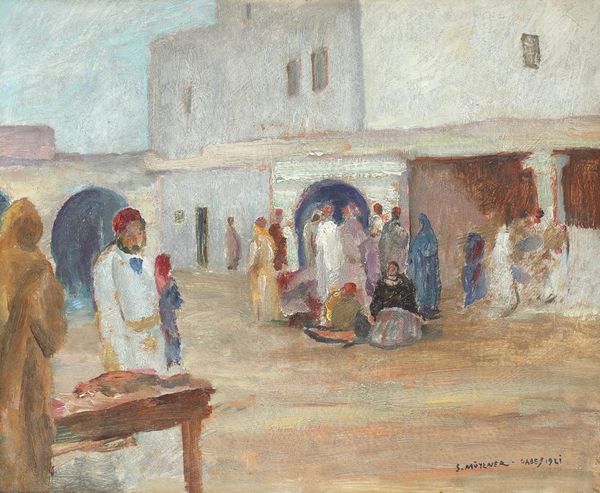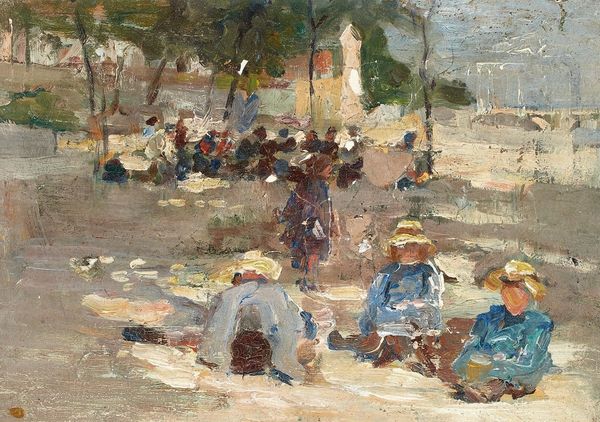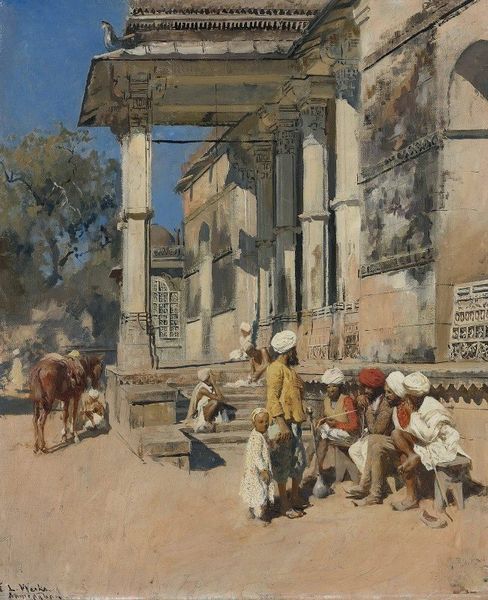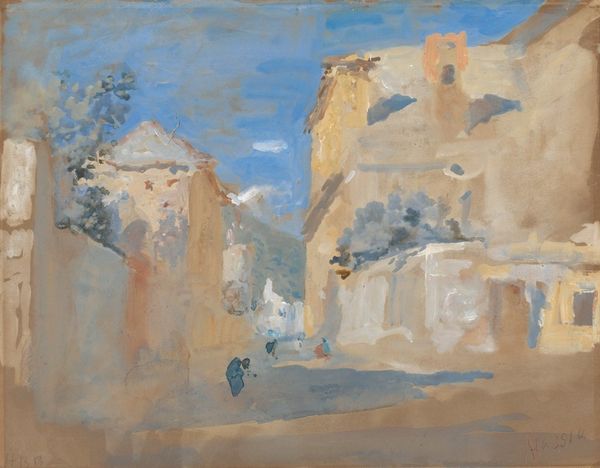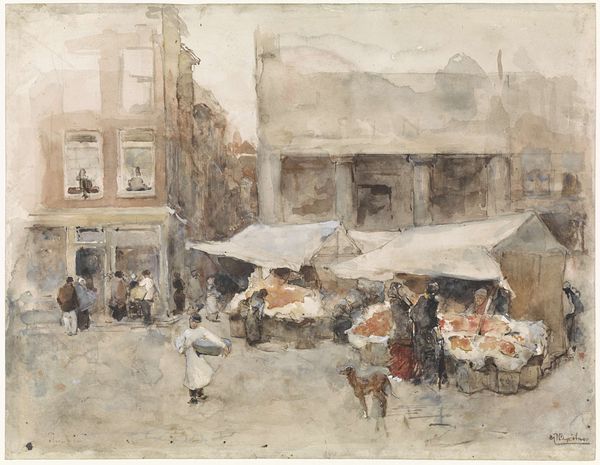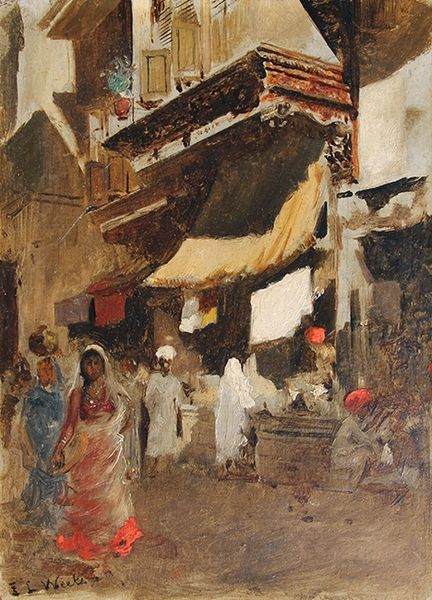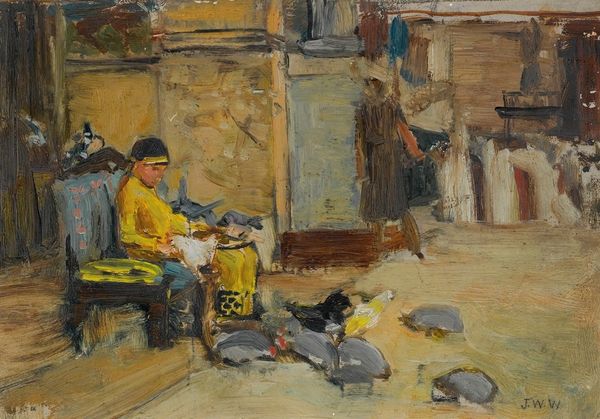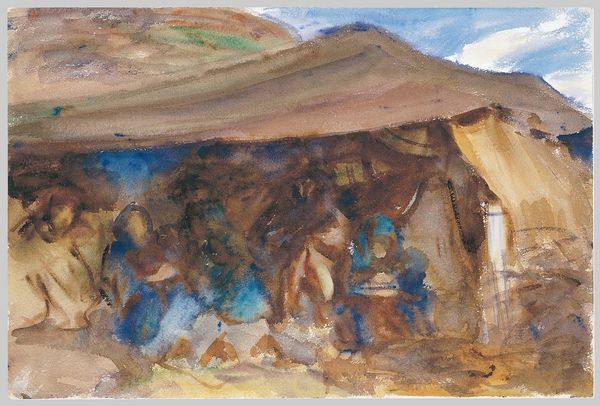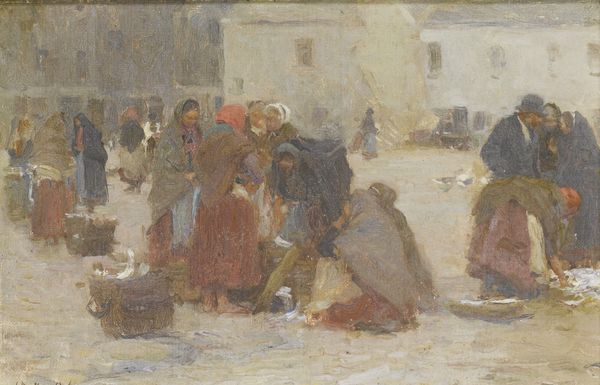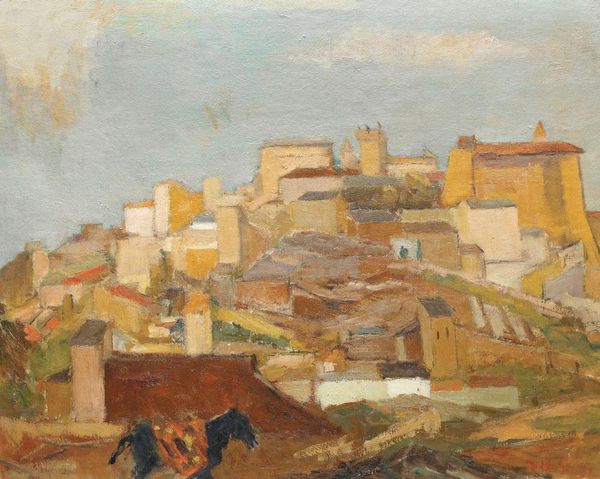
Copyright: Public domain
Curator: Let's turn our attention to Isaac Israels' "Street in Batavia," painted in 1921. A compelling vista crafted with oil paints, it currently resides here at the Centraal Museum in Utrecht. Editor: My immediate impression is the oppressive heat, isn't it? A palpable sense of midday languor seems to saturate the canvas. The way he applies paint, these swift, almost impatient strokes... it conveys so much about the environment. Curator: Indeed. Consider Israels' engagement with Impressionism. He brilliantly captures light and atmosphere, favoring the fleeting moment over meticulous detail. One can almost feel the sun beating down. And there's also Orientalism here, a fascination with non-Western societies in the colonial period. Batavia, now Jakarta, was then the capital of the Dutch East Indies. Editor: You are correct; however, do we see an idealized, exoticised version of the East? I don't know if that is so; it is an observation instead, a snapshot perhaps of ordinary street life in that colony at the time. I find it interesting how the figures lack clear definition; they're integrated completely into their setting rather than standing out. Curator: And that blending—is that a commentary itself on social relationships, or a symptom of Israels' focus? One must reflect how such paintings played into the larger colonial narrative. Do they document, or do they perhaps unwittingly endorse power structures through representation? I would add that they perpetuate the male gaze, with local subjects shown via that European male interpretation. Editor: A vital consideration, for certain. The semiotic weight behind representation always concerns itself with power. But even without a stated meaning from the artist, I'm compelled by its formal qualities. That near monochromatic palette, all the various warm tans... Curator: And what do you conclude looking at Israels' composition again now? Editor: It leaves me appreciating the inherent dynamism within what looks at first to be simply an unadorned vista. I would observe how much Israels conveys with this economy of expression. Curator: And there's a final challenge: viewing the art within the full range of its history, in particular how Israels viewed otherness... I encourage visitors to wrestle with the aesthetics alongside ethical interpretation. Editor: Well, the interplay of form and context undoubtedly creates rich territory for analysis in this "Street in Batavia".
Comments
No comments
Be the first to comment and join the conversation on the ultimate creative platform.
